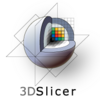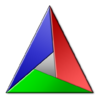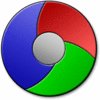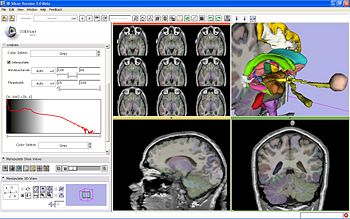Difference between revisions of "NA-MIC-Kit"
| Line 202: | Line 202: | ||
| align="right" |$23,679,468 | | align="right" |$23,679,468 | ||
|- | |- | ||
| − | | | + | | CMake |
| align="right" |224,096 | | align="right" |224,096 | ||
| align="right" |59 | | align="right" |59 | ||
| align="right" |$ 5,880,510 | | align="right" |$ 5,880,510 | ||
| + | |- | ||
| + | | CDash | ||
| + | | align="right" |69,834 | ||
| + | | align="right" |17 | ||
| + | | align="right" |$ 925,955 | ||
|- | |- | ||
|style="background:#8EDEB5; color:black" |Total | |style="background:#8EDEB5; color:black" |Total | ||
Revision as of 16:49, 20 October 2009
Home < NA-MIC-KitBack to NA-MIC Internal Collaborations
Overview
|
The NA-MIC Kit is a free open source software platform. The NA-MIC Kit is distributed under a BSD-style license without restrictions or "give-back" requirements and is intended for research, but there are no restrictions on other uses. It consists of the 3D Slicer application software, a number of tools and toolkits such as VTK and ITK, and a software engineering methodology that enables multiplatform implementations. It also draws on other "best practices" from the community to support automatic testing for quality assurance. The NA-MIC kit uses a modular approach, where the individual components can be used by themselves or together. The NA-MIC kit is fully-compatible with local installation (behind institutional firewalls) and installation as an internet service. Significant effort has been invested to ensure compatibility with standard file formats and interoperability with a large number of external applications. |
Featured Software Tool | |
| 3D Slicer is a general-purpose application for loading, viewing, analyzing, processing and interacting with biomedical data. Slicer can be extended at run-time through plug-in modules, enabling algorithms developers and researchers to modify and specialize Slicer to a particular application. Slicer is distributed under open source license free of commercial restriction. For more information about 3D Slicer click here. | ||
Target Audience
The NA-MIC Kit has been created to support a spectrum of users and developers. This includes:
- biomedical researchers
- algorithms developers
- application developers
- software toolkit developers and users; and
- software process tools including support for building, testing, community building and software management, and is outlined in this presentation (ppt), and this poster (pdf).
The NA-MIC Kit has also been employed by users wishing to perform image analysis and visualization tasks. For example, the Slicer application is being used at Harvard's IIC for astrophysics research. Other tools, such as CMake, are in world wide use in projects as disparate as KDE, one of the world's largest open source software projects. (For more information about the KDE Linux desktop environment, see Why the KDE project switched to CMake, which describes how one of the largest FOSS efforts adopts a component of the NA-MIC kit.)
Software Overview
Users of the NAMIC Kit will typically use a combination of its many modular components. More information about each tool is available below.
- 3D Slicer is a general purpose application. Biomedical researchers will typically use this software tool to load, view, analyze, process and save image data. Slicer has been implemented to interoperate with many other tools, including XNAT, which is an open source image database.
- Slicer modules, which are dynamically loaded by Slicer at run-time, can be used to extend Slicer's core functionality including defining graphical user interfaces. Modules are typically used by algorithms and application developers.
- Application and algorithms developers may also use NA-MIC Kit toolkits and libraries. For example, the Insight Segmentation and Registration Toolkit ITK can be used to develop slicer modules for medical image analysis. The Visualization Toolkit can be used to process, visualize and graphically interact with data. KWWidgets is a 2D graphical user interface toolset that can be used to build applications. Teem is a library of general purpose command-line tools that are useful for processing data. Finally, those individuals wishing to create and manage complex software, the NAMIC-Kit software process is available as embodied in CMake, CTest, CPack, DART and the various documentation, bug tracking and communication tools.
Software Methodology
The Open Source Software development methodology that is used by NA-MIC is summarized in the following documents:
- This presentation (ppt) was given to the participants of the Fifth NA-MIC Project Event by Bill Hoffman in June 2007.
- This poster (pdf) was presented by Will Schroeder at the All-NCBC meeting in July 2006.
- This presentation (ppt) was given at a training event by Sebastien Barre in June 2008.
- This presentation (ppt) was given at a training event by Julien Jomier in June 2008.
Support Resources
- Documentation
- Training curriculum
Open Source Software
NAMIC fully embraces and advocates the use of open source software tools and data. We use BSD style licenses without restrictions on the use of the software and free of license requirements. There are many reasons for this including
- ease of collaboration in the spirit of scientific research (open science);
- improved software quality; and
- widespread dissemination of NAMIC products including software, documentation, data, training materials, and ideas.
Along these lines, we have had extensive discussions relative to acceptable open source standards in the NAMIC kit. We are also working with NIH, NLM and other interested parties to establish open source standards.
Download Central
Please go here to download Slicer software, documentation and data.
Software Packages

|
3D Slicer3D Slicer is a software package for visualization and medical image computing. A tutorial for prospective users of the program can be found on the web. See our tutorials page for an introduction to the use of 3D Slicer. More... |

|
The Visualization Toolkit VTKThe Visualization Toolkit is an object-oriented toolkit for processing, viewing and interacting with a variety of data forms including images, volumes, polygonal data, and simulation datasets such as meshes, structured grids, and hierarchical multi-resolution forms. It also supports large-scale data processing and rendering. More... |

|
The Insight Toolkit ITKThe Insight Segmentation and Registration Toolkit (ITK) is an open-source software toolkit for performing registration and segmentation. Segmentation is the process of identifying and classifying data found in digitally sampled representations. Typically the sampled representation is an image acquired from such medical instrumentation as CT or MRI scanners. Registration is the task of aligning or developing correspondences between data. For example, in the medical environment, a CT scan may be registered with a MRI scan in order to combine the information contained in both. More... |
KWKidgets GUI ToolkitKWWidgets is an Open Source library of GUI classes based on Tcl/Tk with a C++ API. This library was originally developed by Kitware for ParaView, and now has been extended in functionality and architecture thanks to NAMIC support. More... | |

|
Teem Libraries and Command Line ToolsTeem is a coordinated group of libraries for representing, processing, and visualizing scientific raster data. Teem includes command-line tools that permit the library functions to be quickly applied to files and streams, without having to write any code. More... |

|
XNAT Web-based Image Informatics ServerThe Extensible Neuroimaging Archive Toolkit (XNAT) is an open source software platform designed to facilitate management and exploration of neuroimaging and related data. XNAT includes a secure database backend and a rich web-based user interface. NA-MIC is working to provide a portable, easy-to-install and easy-to-administer version of XNAT that can be deployed as part the Kit. These efforts will build on ongoing work in the BIRN community to integrate Slicer with XNAT. |

|
BatchmakeBatchMake is a cross platform tool for batch processing of large amount of data. BatchMake can process datasets locally or on distributed systems using Condor (a grid computing tool that enables distributed computing across the network). Some of the key features of BatchMake include: 1) a BSD License, 2) CMake-like scripting language, 3) distributed scripting via Condor, 4) a centralized remote website for online statistical analysis. 4) a user Interface using FLTK, and 5) BatchMake is cross platform. More... |

|
CMake The Cross-platform Make ToolCMake is used to control the software build process using simple platform, compiler and operating system independent configuration files. CMake generates native makefiles and workspaces that can be used in the development environment of your choice. That is, CMake does not attempt to replace standard development tools such as compilers and debuggers, rather it produces build files and other development resources that can benefit from automated generation. Further, once CMake configuration files are created, they can be used to produce developer resources across the many platforms that CMake supports. CMake is quite sophisticated: it is possible to support complex environments requiring system configuration, pre-processor generation, code generation, and template instantiation. More... New: CMake has been adopted by KDE, one of the world's largest open source software systems. |

|
CDash, CTest, CPack Software Process ToolsAs an adjunct to CMake the tools CDash, CTest, CPack are used to test and package all components of the NAMIC kit. CTest is a testing client that locally performs testing on a software repository, and then communicates the results of the testing to CDash (and other testing, dashboard servers such as DART2). CPack is a cross-platform tool for packaging, distributing and installing the NAMIC kit on various systems including Linux, Windows, and Mac OSX. More...
|
View NA-MIC-Kit dashboards here:
The testing dashboards continually captures information relative to the quality of the various components of the NAMIC-Kit. Each component has its own dashboard, and a suite of tests that are executed on a continual basis. Developers check out these dashboards to monitor the health of the software, and to make fixes when problems are discovered. The following are the component dashboards for the NAMIC-Kit.
Go to NA-MIC-Kit-Old to see the version of the NA-MIC Kit web pages prior to October 2007.
NA-MIC Kit in Numbers
The numbers in this table are statistics characterizing the NA-MIC kit. They provide an estimate of the scale of the Kit, including approximate costs to create and total effort expended. Note that estimates such as these are required because large open-source software systems cannot be tracked via direct investment since much of the effort is voluntary in nature, and distributed across the world through a variety of organizations.
Source: http://www.ohloh.org. Captured on October 20 2009. See the Ohloh website for an explanation of how the numbers were computed.
| Package | Lines of code | Person years | Price tag at 100k per person year |
| Slicer | 1,208,022 | 343 | $34,262,359 |
| KWW | 206,753 | 54 | $ 5,394,043 |
| VTK | 1,553,432 | 447 | $44,680,490 |
| ITK | 847,033 | 237 | $23,679,468 |
| CMake | 224,096 | 59 | $ 5,880,510 |
| CDash | 69,834 | 17 | $ 925,955 |
| Total | 4,039,336 | 1140 | $113,898,870 |
